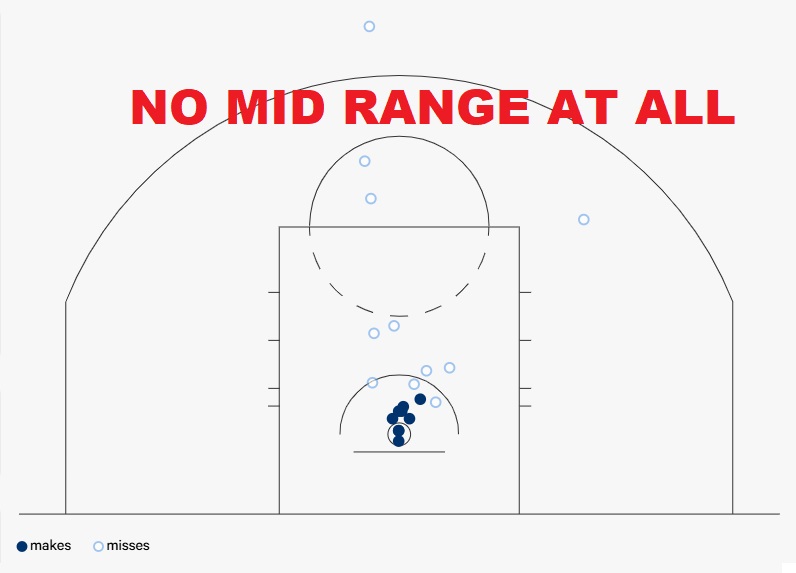As the NBA landscape evolves, teams chasing a championship often look for that perfect complementary piece—a veteran who brings experience, skill, and clutch performance without demanding the spotlight. Enter Khris Middleton, the 34-year-old forward currently with the Washington Wizards. While his 2024-25 season was marred by injuries and a mid-season trade, Middleton’s track record suggests he could still be a game-changer for a contender. (Here is why he is unique in the way he fits with Giannis.)
A Proven Championship Pedigree
Khris Middleton isn’t just another role player; he’s a bonafide winner. His crowning achievement came in 2021 when he helped lead the Milwaukee Bucks to their first NBA title in 50 years. During that postseason, Middleton averaged 23.6 points, 7.6 rebounds, and 5.1 assists per game, stepping up as the reliable second option alongside Giannis Antetokounmpo. His performance in the Finals against the Phoenix Suns was legendary—scoring 40 points in Game 4 and delivering clutch shots that sealed the series.
This isn’t ancient history. Even in recent years, Middleton has shown flashes of that same reliability. In the 2023 playoffs, despite injuries, he averaged 24.7 points, 9.2 rebounds, and 4.7 assists against the Indiana Pacers. For teams like the New York Knicks or Boston Celtics, who are built around star duos but need depth in high-stakes moments, Middleton’s experience could be invaluable. He’s been through the wars, knows how to handle pressure, and has a gold medal from Team USA at the 2020 Olympics to boot.
Versatile Skill Set That Fits Any System

What makes Middleton so appealing is his well-rounded game. Standing at 6’7″ with a 6’11” wingspan, he’s a prototypical 3-and-D wing who can guard multiple positions. His career 38.8% three-point shooting forces defenses to respect him from deep, opening lanes for stars like Jalen Brunson or Luka Doncic on a potential new team.
Offensively, Middleton excels in mid-range pull-ups and off-ball movement, making him a low-usage scorer who doesn’t need the ball to impact games. Defensively, he’s averaged over a steal per game in multiple seasons and can switch onto guards or forwards. In an era where versatility wins titles—think of players like Jrue Holiday or Derrick White—Middleton’s ability to adapt is a huge plus.
Even at 34, his advanced metrics from healthier stretches show promise. In the 2023-24 season with the Bucks, he posted a true shooting percentage of 59.3% and a player efficiency rating (PER) of 18.4. For a contender, he could slot in as a third or fourth option, providing spacing and stability without ego clashes.
Navigating Recent Challenges: Injuries and Context
It’s fair to address the elephant in the room: Middleton’s 2024-25 season was underwhelming. After bilateral ankle surgeries in the offseason, he missed the start of the year and debuted in December. Traded to the Wizards in February as part of a deal that sent Kyle Kuzma to Milwaukee, he averaged just 10.7 points, 3.7 rebounds, and 3.4 assists in 22.1 minutes over 37 games. Injuries, including a knee contusion and ankle issues, limited him further, leading to multiple DNPs.
However, context matters. The Wizards are in full rebuild mode, prioritizing youth like Alex Sarr and Bub Carrington. Middleton was brought in more for veteran leadership than star production, serving as a mentor to a roster averaging under 25 years old. On a contending team with better spacing and fewer minutes demands, he could rebound—much like how veterans like Al Horford have thrived in reduced roles.
Analysts note that health is key for Middleton, as it was for the Bucks’ post-2021 struggles. If he regains form, his value skyrockets; if not, his expiring contract minimizes risk.
Ideal Fits for Contending Teams
Several teams could benefit from Middleton’s addition via trade or buyout. The Knicks, for instance, have eyed him as a postseason boost, valuing his shooting and defense alongside Mikal Bridges and OG Anunoby. In Philadelphia, he could provide wing depth for Joel Embiid and Tyrese Maxey, easing the load on aging stars.
The Cleveland Cavaliers, predicted by some to win the 2025 title, might see him as a veteran upgrade over aging pieces. Even Western Conference teams like the Dallas Mavericks or Oklahoma City Thunder could use his experience in closing lineups. Social media buzz from X users highlights his potential “championship value” in trades, with fans noting his ability to “carry” in key moments.
His $33.3 million player option for 2025-26, which he exercised, makes him an expiring deal—attractive for salary matching in trades without long-term commitment. The Wizards, focused on tanking, might waive or trade him for assets, as suggested in recent reports.
The Bottom Line: Undervalued Asset with Upside
In a league where championships are won by depth and intangibles, Khris Middleton offers a rare blend of skill, experience, and humility. While his prime may be behind him, his contributions to the Bucks’ title run prove he can elevate a good team to great. For any squad with championship aspirations—be it the Knicks, Cavs, or beyond—acquiring Middleton could be the low-risk, high-reward move that tips the scales.
As the 2025-26 season approaches, keep an eye on Middleton’s situation in Washington. If he lands on a contender, don’t be surprised if he becomes the X-factor in another deep playoff journey. The Bucks made the biggest mistake in trading him. Unless the only purpose of the team is to make Giannis look good in the regular season, because that is what it looks like right now.













